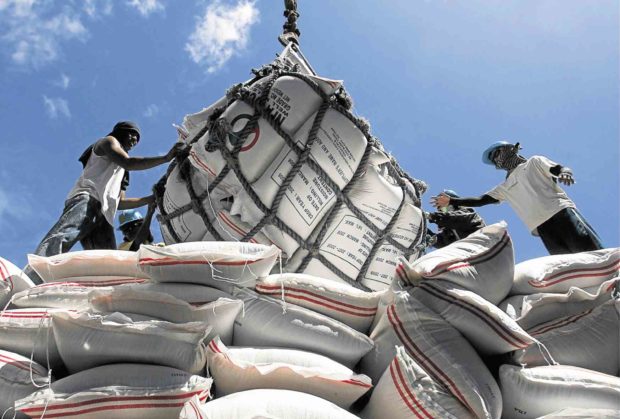Customs on track to collect P10B from rice imports
Customs Commissioner Rey Leonardo B. Guerrero on Friday expressed confidence that the country’s second-biggest revenue agency would hit its P10-billion target collections from rice tariffs this year.
In a statement, Guerrero said the Bureau of Customs (BOC) was “on track to meet” the programmed tax take for 2019 under Republic Act No. 11203 or the Rice Liberalization Act being implemented since March.
RA 11203 which took effect on March 5, was created to address the crisis that the country faced due to the shortage of rice in the country in 2018. The rice tariffication law replaced the former quota system being implemented on rice imports making it easier for importers and traders to import rice to meet local demands and lower market prices as well as the country’s inflation rate.
With RA 11203 in place, Guerrero said private rice importation jumped 422.25 percent to 966,690 metric tons between March and June from just 185,100 metric tons (MT) during the same four-month period last year.
“An average of 256,445 MT per month of rice importation after implementation of RA 11203 was recorded compared to 46,275 MT average per month for the same period last year,” the BOC chief added.
“The steady volume of rice importation is a strong indication that the BOC will be able to meet the target of P10 billion in tariff collection for the year for remittance to the Rice Competitiveness Enhancement Fund (RCEF) as well as other concerned agencies in connection with RA 11203. The RCEF was created to help palay growers and rice farmers’ cooperatives transition to a new rice regime. At present, BOC already collected P5.889 billion from rice importation,” Guerrero said.
Last week, Socioeconomic Planning Secretary Ernesto M. Pernia said the RCEF being derived from the revenues coming from rice tariffs were already being distributed.
Under RA 11203, the following tariff rates apply: 35 percent if rice was imported from Asean; 40 percent if within the minimum access volume (MAV) of 350,000 MT from countries outside Asean, and 180 percent if above the MAV and coming from a non-Asean country.
RA 11203 removed the state-run National Food Authority’s (NFA) commercial functions and regulatory powers while retaining the agency’s emergency buffer stocking mandate as the government liberalized rice importation to bring down domestic prices.
Pernia, who heads the state-planning agency National Economic and Development Authority (Neda), last week said the country now has “more than enough” rice supply. —BEN O. DE VERA

